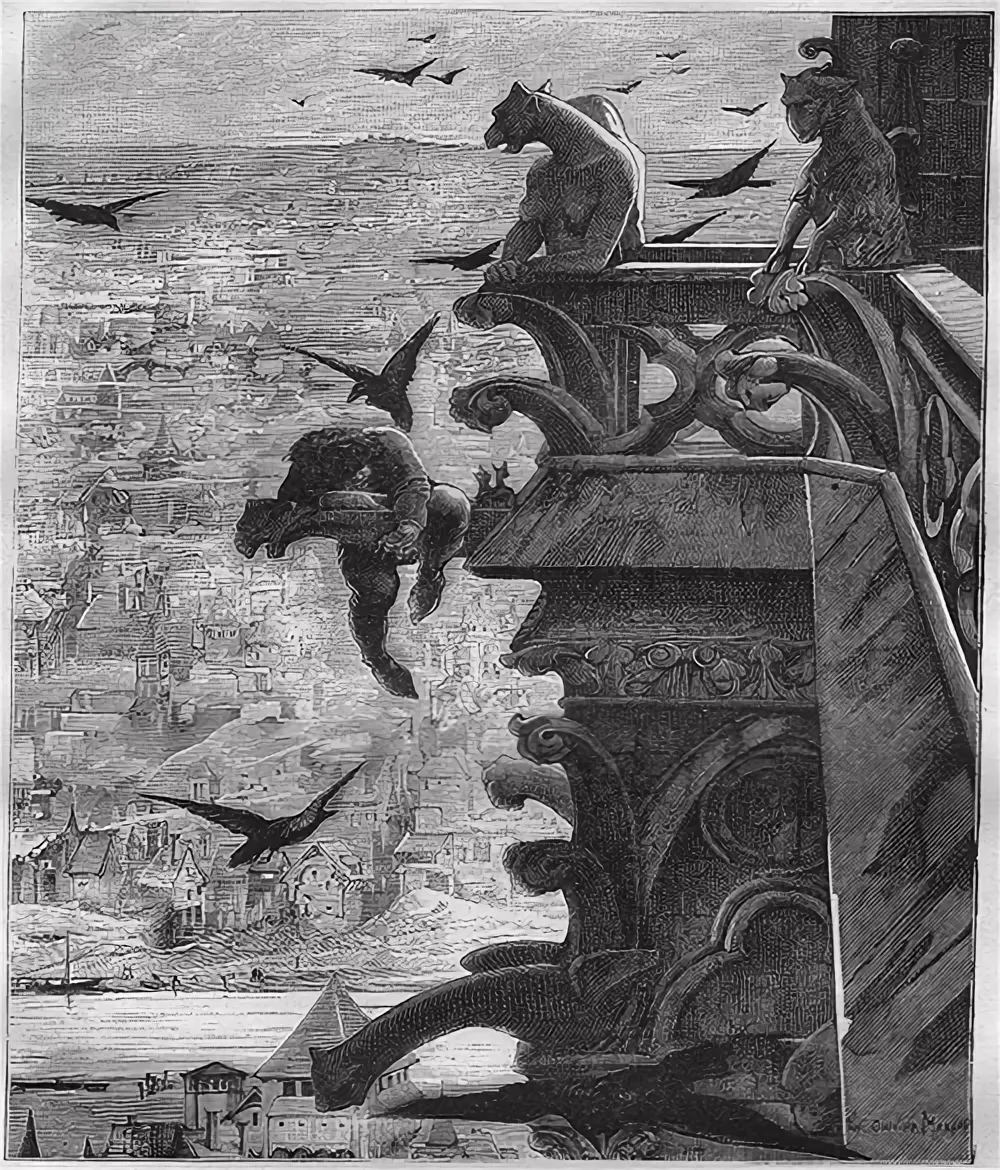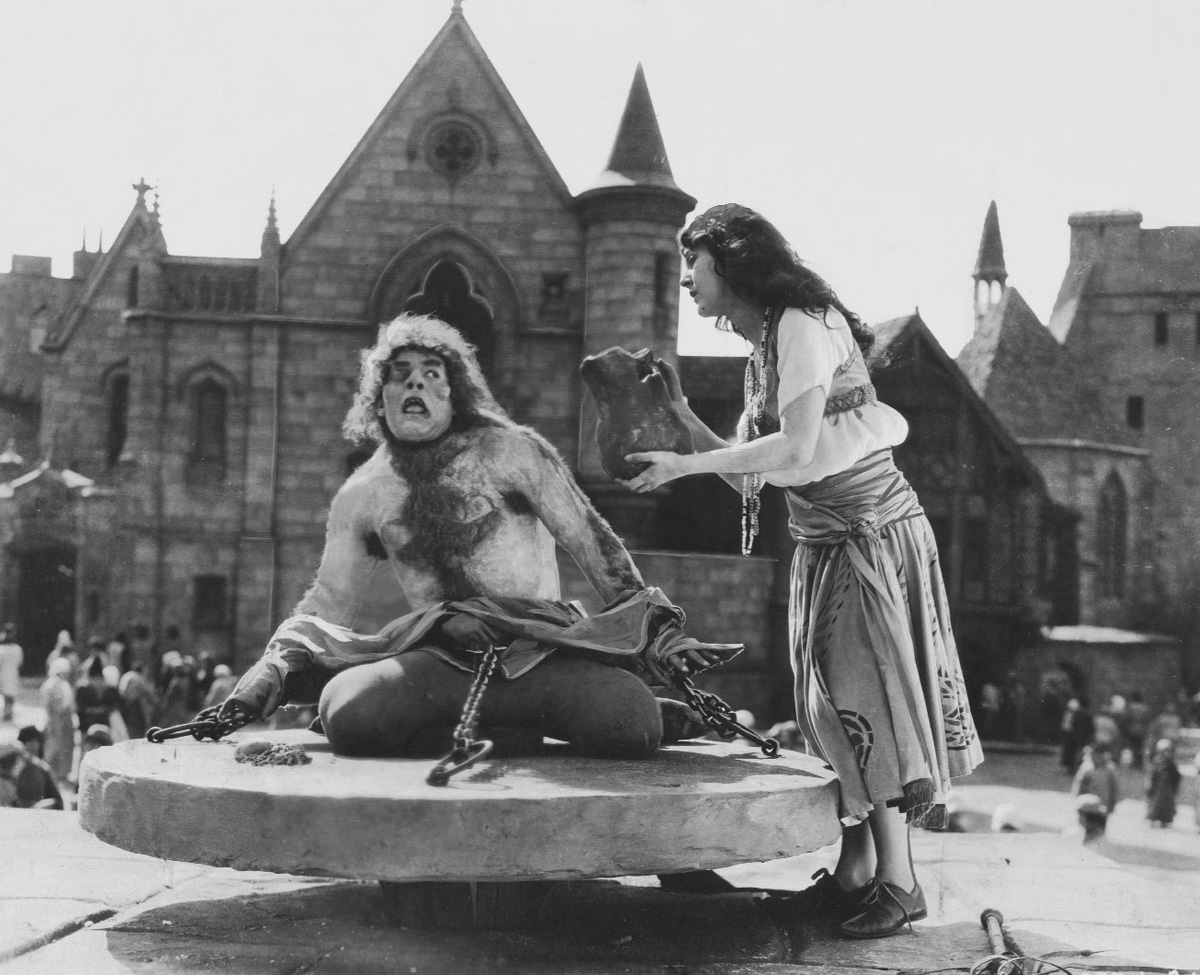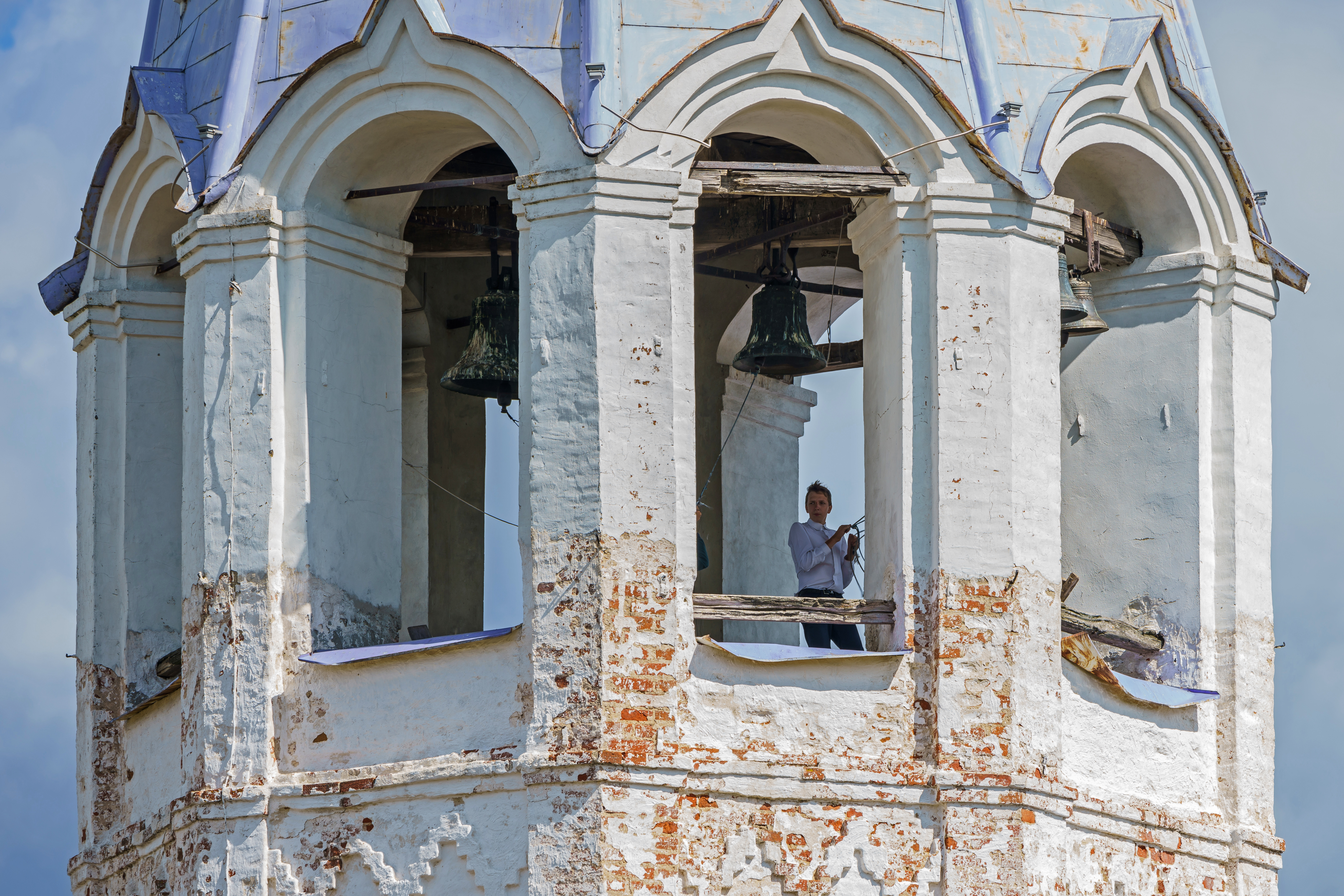|
The Hunchback Of Notre Dame
''The Hunchback of Notre-Dame'' (french: Notre-Dame de Paris, translation=''Our Lady of Paris'', originally titled ''Notre-Dame de Paris. 1482'') is a French Gothic novel by Victor Hugo, published in 1831. It focuses on the unfortunate story of Quasimodo, the Gypsy street dancer Esmeralda and Quasimodo's guardian the Archdeacon Claude Frollo in 15th-century Paris. All its elements—Renaissance setting, impossible love affairs, marginalized characters—make the work a model of the literary themes of Romanticism. The novel has been described as a key text in French literature and has been adapted for film over a dozen times, in addition to numerous television and stage adaptations, such as a 1923 silent film with Lon Chaney, a 1939 sound film with Charles Laughton, and a 1996 Disney animated film with Tom Hulce. The novel sought to preserve values of French culture in a time period of great change, which resulted in the destruction of many French Gothic structures. The nov ... [...More Info...] [...Related Items...] OR: [Wikipedia] [Google] [Baidu] |
The Hunchback Of Notre Dame (1996 Film)
''The Hunchback of Notre Dame'' is a 1996 American animated musical drama film produced by Walt Disney Feature Animation and released by Walt Disney Pictures. The 34th Disney animated feature film and the seventh produced during the Disney Renaissance, it is loosely based on the 1831 novel of the same name by Victor Hugo. The film was directed by Gary Trousdale and Kirk Wise and produced by Don Hahn, from a screenplay written by Tab Murphy, Irene Mecchi, Jonathan Roberts, and the writing team of Bob Tzudiker and Noni White. Featuring the voices of Tom Hulce, Demi Moore, Tony Jay, and Kevin Kline, the film follows Quasimodo, the deformed and confined bell-ringer of Notre Dame, and his yearning to explore the outside world and be accepted by society, against the wishes of his cruel, puritanical foster father Claude Frollo, who also wants to exterminate Paris' Romani population. The film is considered to be one of Disney's darkest animated films due to its mature subject ma ... [...More Info...] [...Related Items...] OR: [Wikipedia] [Google] [Baidu] |
The Hunchback Of Notre Dame (1923 Film)
''The Hunchback of Notre Dame'' is a 1923 American drama film starring Lon Chaney, directed by Wallace Worsley, and produced by Carl Laemmle and Irving Thalberg. The supporting cast includes Patsy Ruth Miller, Norman Kerry, Nigel de Brulier, and Brandon Hurst. The film was Universal's "Super Jewel" of 1923 and was their most successful silent film, grossing $3.5 million. The film premiered on September 2, 1923 at the Astor Theatre in New York, New York, then went into release on September 6. The screenplay was written by Perley Poore Sheehan and Edward T. Lowe Jr., based on Victor Hugo's 1831 novel, and is notable for the grand sets that recall 15th century Paris as well as for Chaney's performance and make-up as the tortured hunchback bellringer Quasimodo. This was the seventh film adaptation of the novel. The film elevated Chaney, who was already a well-known character actor, to full star status in Hollywood, and also helped set a standard for many later horror films, includi ... [...More Info...] [...Related Items...] OR: [Wikipedia] [Google] [Baidu] |
Lon Chaney
Leonidas Frank "Lon" Chaney (April 1, 1883 – August 26, 1930) was an American actor. He is regarded as one of the most versatile and powerful actors of cinema, renowned for his characterizations of tortured, often grotesque and afflicted characters, and his groundbreaking artistry with makeup. Chaney was known for his starring roles in such silent horror films as ''The Hunchback of Notre Dame'' (1923) and ''The Phantom of the Opera'' (1925). His ability to transform himself using makeup techniques that he developed earned him the nickname "The Man of a Thousand Faces". Early life Leonidas Frank Chaney was born in Colorado Springs, Colorado, to Frank H. Chaney (a barber) and Emma Alice Kennedy. His father was of English and French ancestry, and his mother was of Scottish, English, and Irish descent. Chaney's maternal grandfather, Jonathan Ralston Kennedy, founded the "Colorado School for the Education of Mutes" (now Colorado School for the Deaf and Blind) in 1874, and ... [...More Info...] [...Related Items...] OR: [Wikipedia] [Google] [Baidu] |
Louis XI
Louis XI (3 July 1423 – 30 August 1483), called "Louis the Prudent" (french: le Prudent), was King of France from 1461 to 1483. He succeeded his father, Charles VII. Louis entered into open rebellion against his father in a short-lived revolt known as the Praguerie in 1440. The king forgave his rebellious vassals, including Louis, to whom he entrusted the management of the Dauphiné, then a province in southeastern France. Louis's ceaseless intrigues, however, led his father to banish him from court. From the Dauphiné, Louis led his own political establishment and married Charlotte of Savoy, daughter of Louis, Duke of Savoy, against the will of his father. Charles VII sent an army to compel his son to his will, but Louis fled to Burgundy, where he was hosted by Philip the Good, the Duke of Burgundy, Charles' greatest enemy. When Charles VII died in 1461, Louis left the Burgundian court to take possession of his kingdom. His taste for intrigue and his intense diplomatic activ ... [...More Info...] [...Related Items...] OR: [Wikipedia] [Google] [Baidu] |
Gothic Architecture
Gothic architecture (or pointed architecture) is an architectural style that was prevalent in Europe from the late 12th to the 16th century, during the High and Late Middle Ages, surviving into the 17th and 18th centuries in some areas. It evolved from Romanesque architecture and was succeeded by Renaissance architecture. It originated in the Île-de-France and Picardy regions of northern France. The style at the time was sometimes known as ''opus Francigenum'' (lit. French work); the term ''Gothic'' was first applied contemptuously during the later Renaissance, by those ambitious to revive the architecture of classical antiquity. The defining design element of Gothic architecture is the pointed or ogival arch. The use of the pointed arch in turn led to the development of the pointed rib vault and flying buttresses, combined with elaborate tracery and stained glass windows. At the Abbey of Saint-Denis, near Paris, the choir was reconstructed between 1140 and 1144, draw ... [...More Info...] [...Related Items...] OR: [Wikipedia] [Google] [Baidu] |
Victor Hugo-Hunchback
The name Victor or Viktor may refer to: * Victor (name), including a list of people with the given name, mononym, or surname Arts and entertainment Film * ''Victor'' (1951 film), a French drama film * ''Victor'' (1993 film), a French short film * ''Victor'' (2008 film), a 2008 TV film about Canadian swimmer Victor Davis * ''Victor'' (2009 film), a French comedy * ''Victor'', a 2017 film about Victor Torres by Brandon Dickerson * ''Viktor'' (film), a 2014 Franco/Russian film Music * ''Victor'' (album), a 1996 album by Alex Lifeson * "Victor", a song from the 1979 album ''Eat to the Beat'' by Blondie Businesses * Victor Talking Machine Company, early 20th century American recording company, forerunner of RCA Records * Victor Company of Japan, usually known as JVC, a Japanese electronics corporation originally a subsidiary of the Victor Talking Machine Company ** Victor Entertainment, or JVCKenwood Victor Entertainment, a Japanese record label ** Victor Interactive So ... [...More Info...] [...Related Items...] OR: [Wikipedia] [Google] [Baidu] |
Bell-ringer
A bell-ringer is a person who rings a Bell (instrument), bell, usually a church bell, by means of a rope or other mechanism. Despite some automation of bells for random swinging, there are still many active bell-ringers in the world, particularly those with an advanced ringing tradition such as Full circle ringing, full-circle or Russian ringing, which are artistic and skilled performances which are difficult to automate. The term campanologist is popularly misused to refer to a bell-ringer, but this properly refers to someone who studies bells, which is known as campanology. Although in some places carillons are used to sound bells, they are "played" by carillonneurs, not by bell-ringers, and are associated with the ringing of tunes in the Western musical tradition. Full-circle ringing English full-circle ringing In England, it is estimated there are about 40,000 bell-ringers ringing on ring of bells, rings of bells in the English Full circle ringing, full-circle style. This ... [...More Info...] [...Related Items...] OR: [Wikipedia] [Google] [Baidu] |
Notre-Dame De Paris
Notre-Dame de Paris (; meaning "Our Lady of Paris"), referred to simply as Notre-Dame, is a medieval Catholic cathedral on the Île de la Cité (an island in the Seine River), in the 4th arrondissement of Paris. The cathedral, dedicated to the Virgin Mary, is considered one of the finest examples of French Gothic architecture. Several of its attributes set it apart from the earlier Romanesque style, particularly its pioneering use of the rib vault and flying buttress, its enormous and colourful rose windows, and the naturalism and abundance of its sculptural decoration. Notre Dame also stands out for its musical components, notably its three pipe organs (one of which is historic) and its immense church bells. Construction of the cathedral began in 1163 under Bishop Maurice de Sully and was largely completed by 1260, though it was modified frequently in the centuries that followed. In the 1790s, during the French Revolution, Notre-Dame suffered extensive desecration; much of i ... [...More Info...] [...Related Items...] OR: [Wikipedia] [Google] [Baidu] |
French Gothic Architecture
French Gothic architecture is an architectural style which emerged in France in 1140, and was dominant until the mid-16th century. The most notable examples are the great Gothic cathedrals of France, including Notre-Dame Cathedral, Reims Cathedral, Chartres Cathedral, and Amiens Cathedral. Its main characteristics were the search for verticality, or height, and the innovative use of the rib vault and flying buttresses and other architectural innovations to distribute the weight of the stone structures to supports on the outside, allowing unprecedented height and volume. The new techniques also permitted the addition of larger windows, including enormous stained glass windows, which filled the cathedrals with light. The French style was widely copied in other parts of northern Europe, particularly Germany and England. It was gradually supplanted as the dominant French style in the mid-16th century by French Renaissance architecture. Origins French Gothic architecture was the r ... [...More Info...] [...Related Items...] OR: [Wikipedia] [Google] [Baidu] |
Culture Of France
The culture of France has been shaped by geography, by historical events, and by foreign and internal forces and groups. France, and in particular Paris, has played an important role as a center of high culture since the 17th century and from the 19th century on, worldwide. From the late 19th century, France has also played an important role in cinema, fashion, cuisine, literature, technology, the social sciences, and mathematics. The importance of French culture has waxed and waned over the centuries, depending on its economic, political and military importance. French culture today is marked both by great regional and socioeconomic differences and strong unifying tendencies. A global opinion poll for the BBC saw France ranked as the country with the fourth most positive influence in the world (behind Germany, Canada and the UK) in 2014. French culture The Académie Française sets an official standard of linguistic purism; however, this standard, which is not mandatory, ... [...More Info...] [...Related Items...] OR: [Wikipedia] [Google] [Baidu] |




.jpg)


